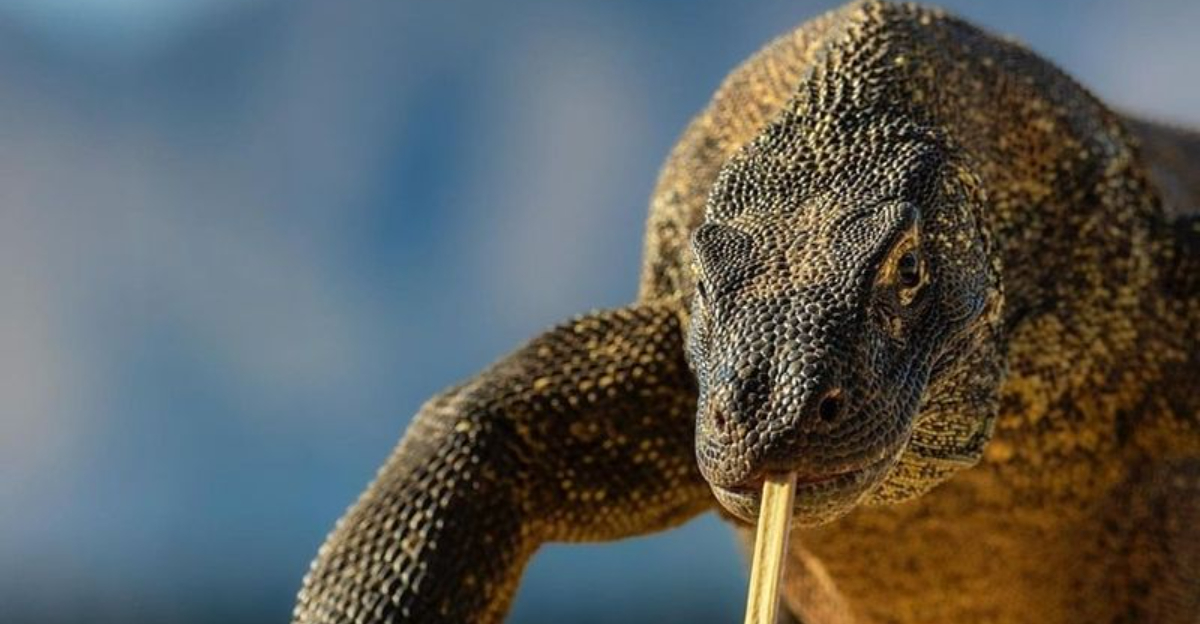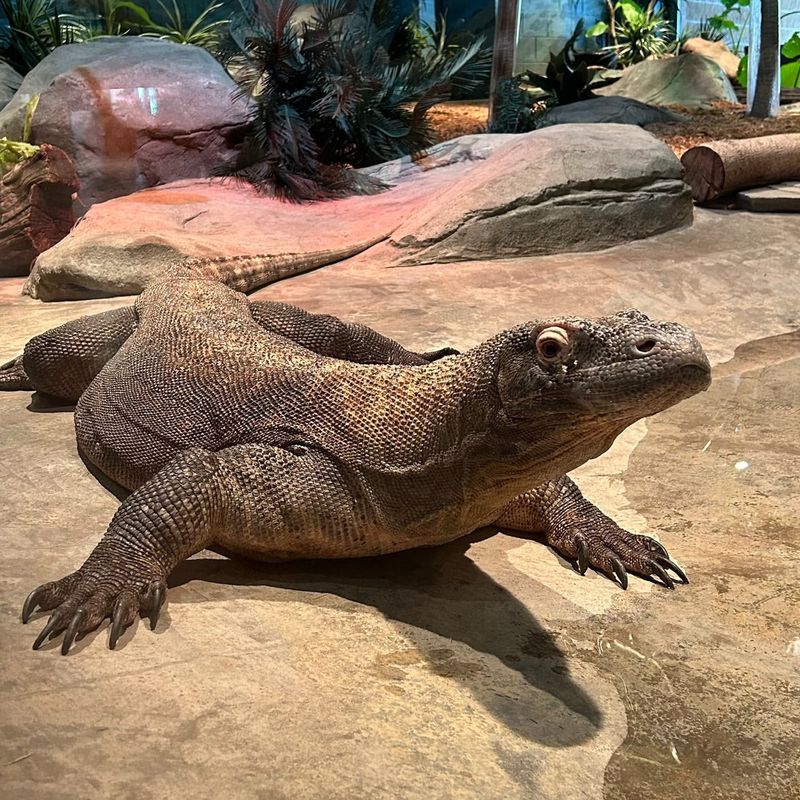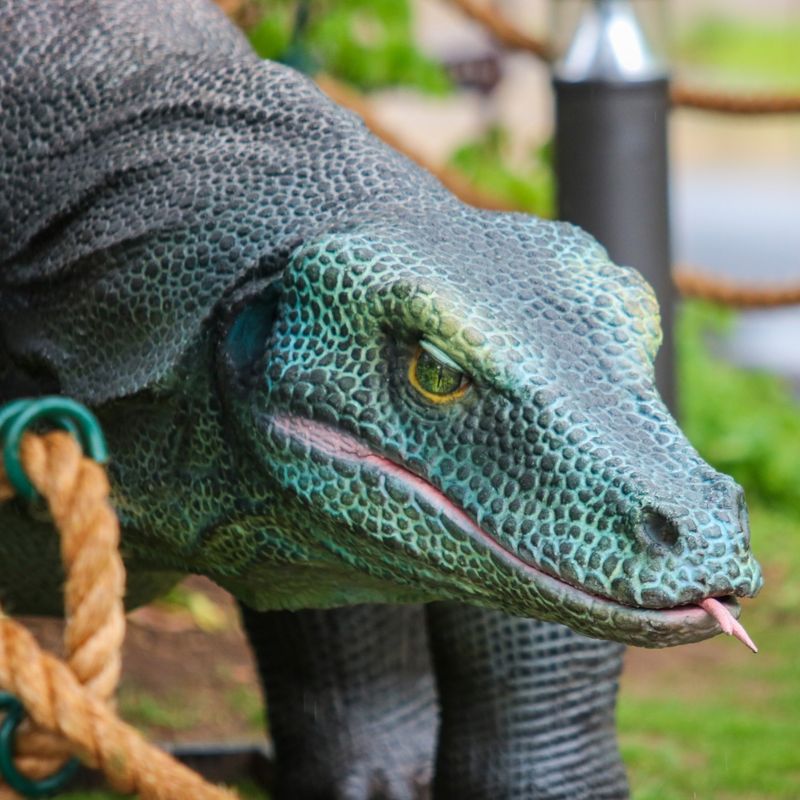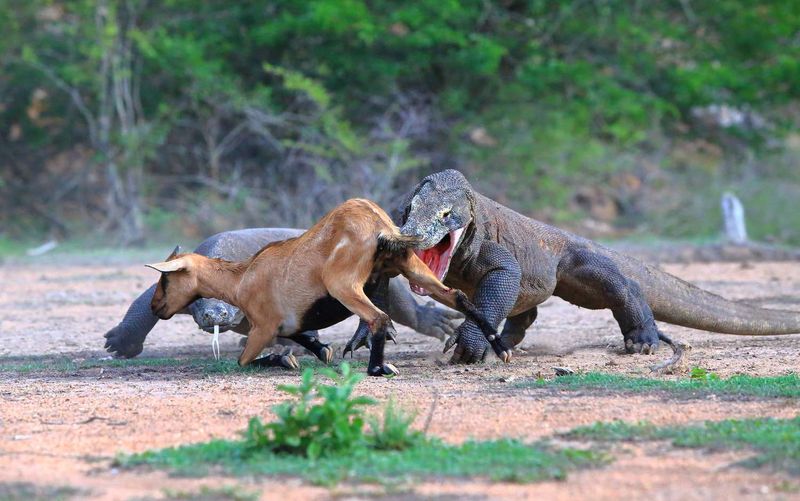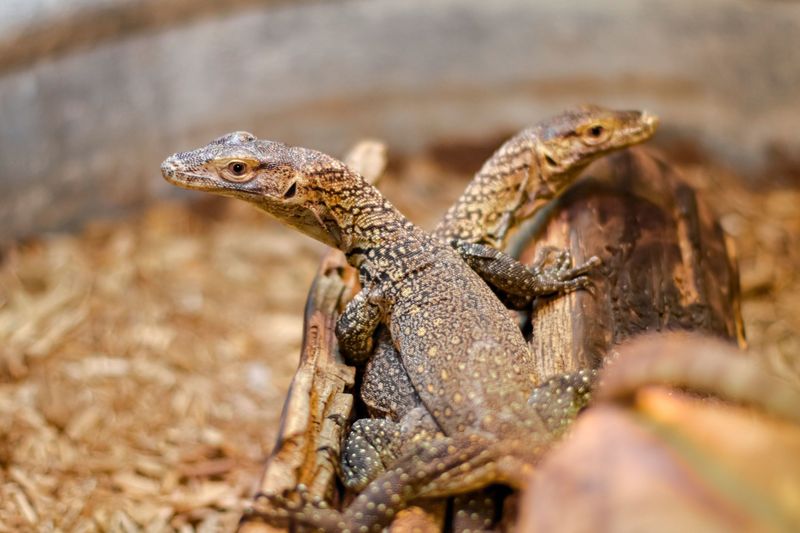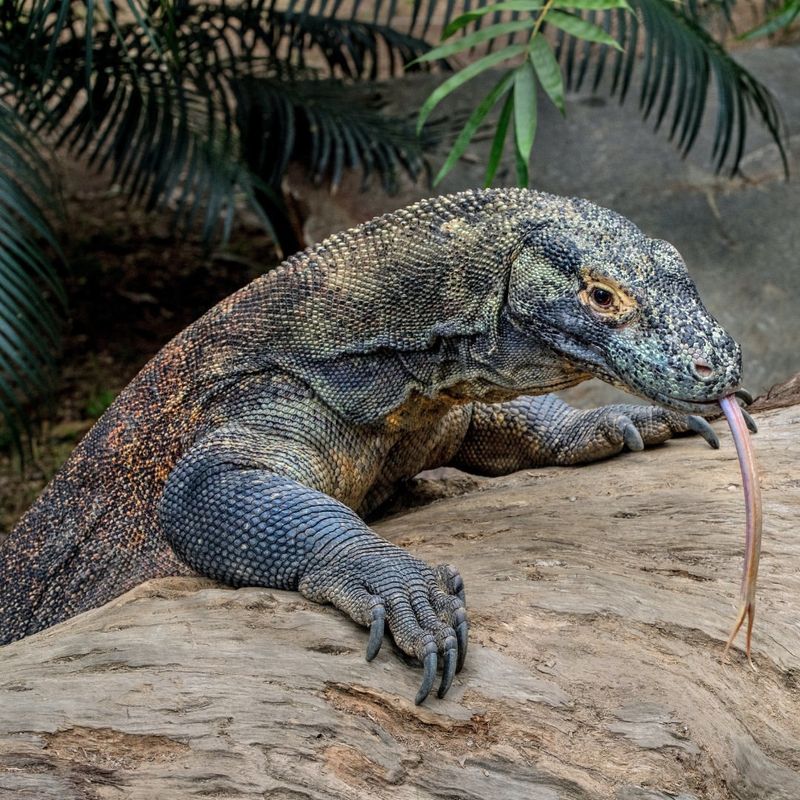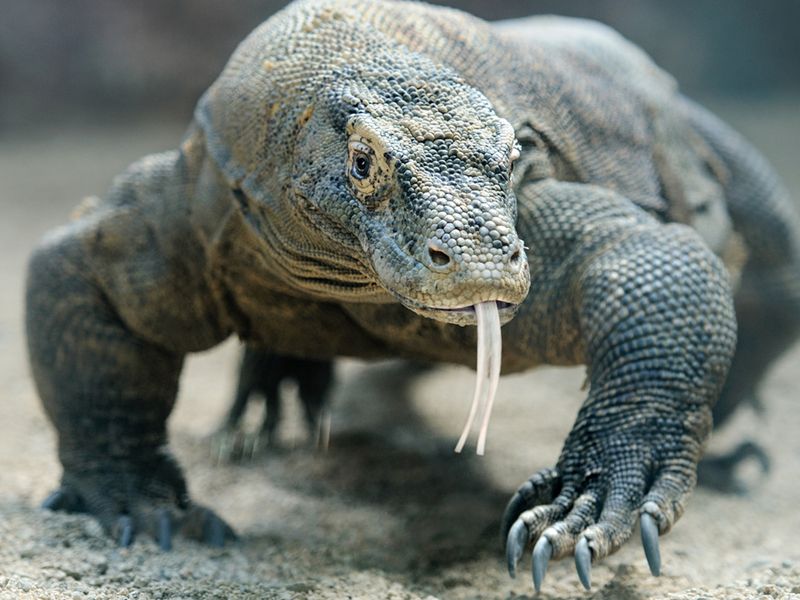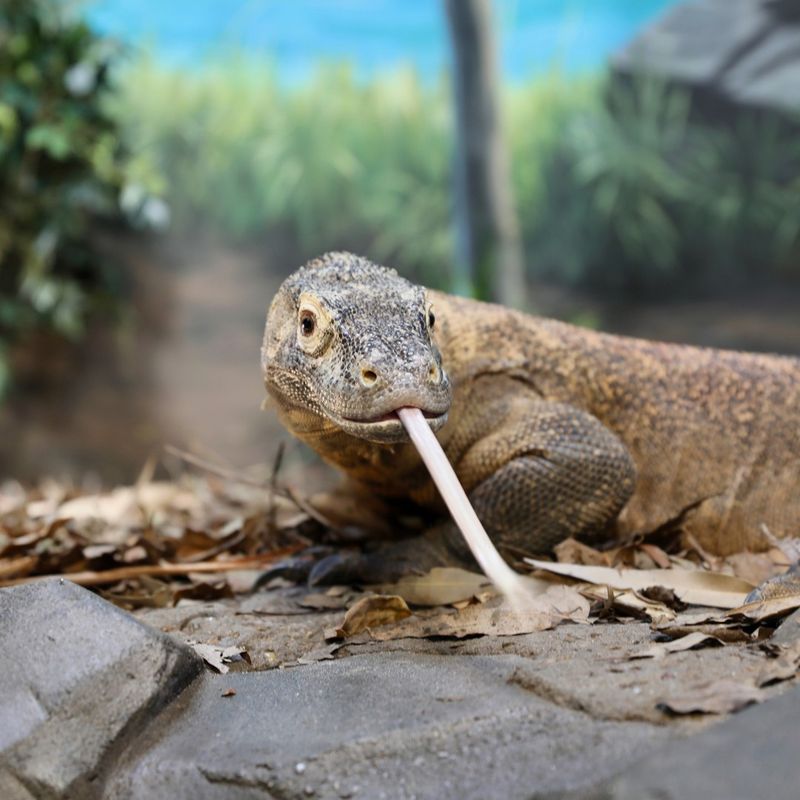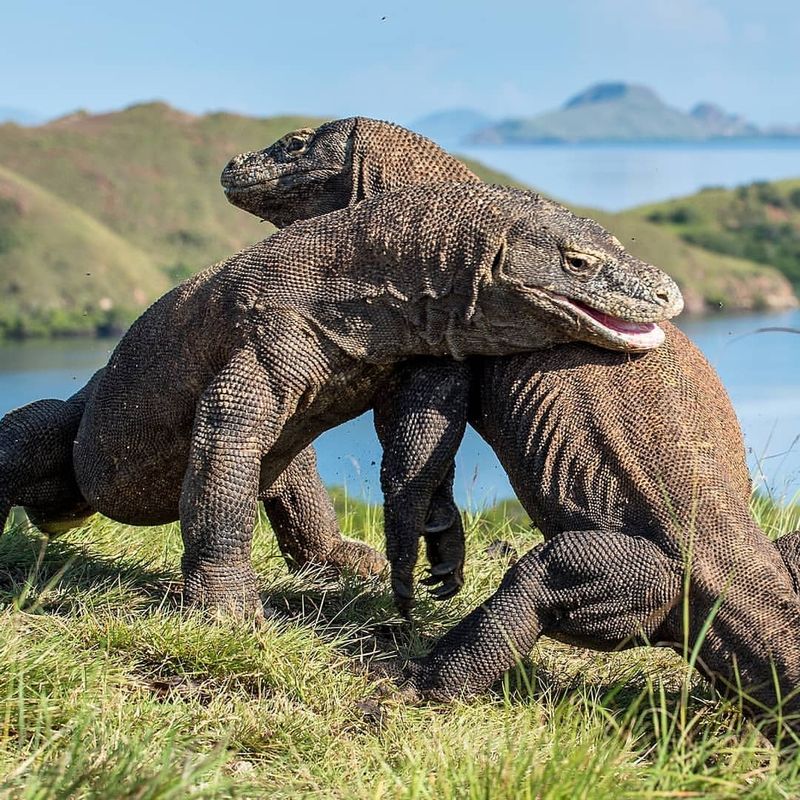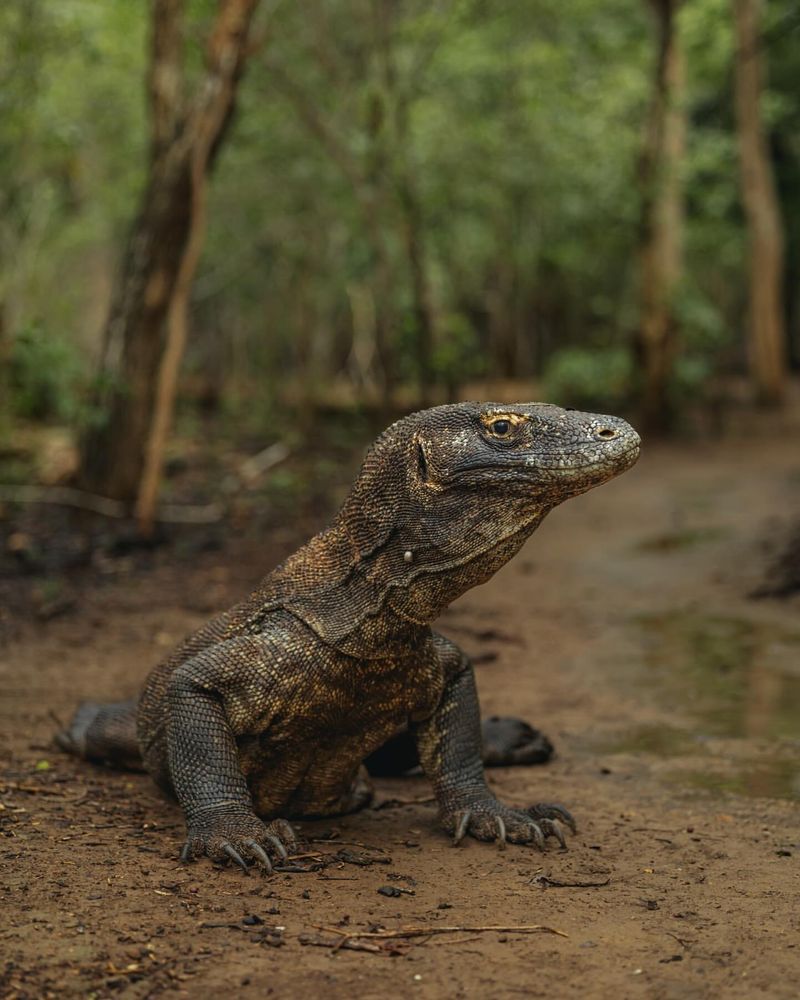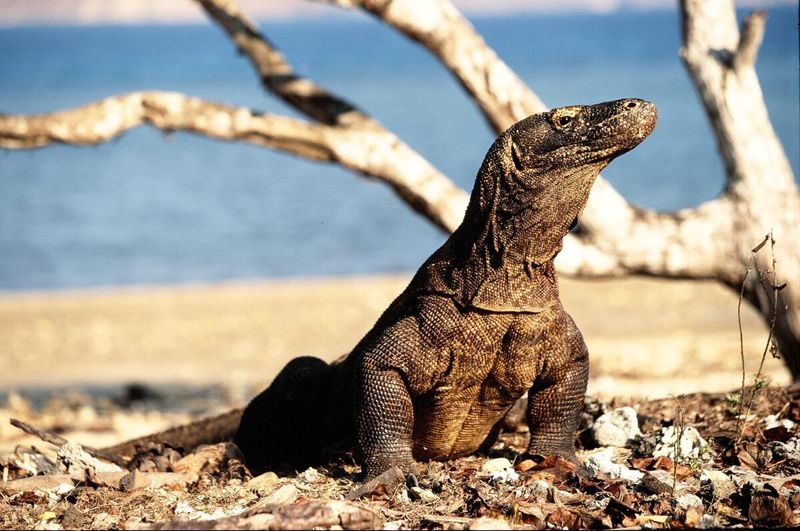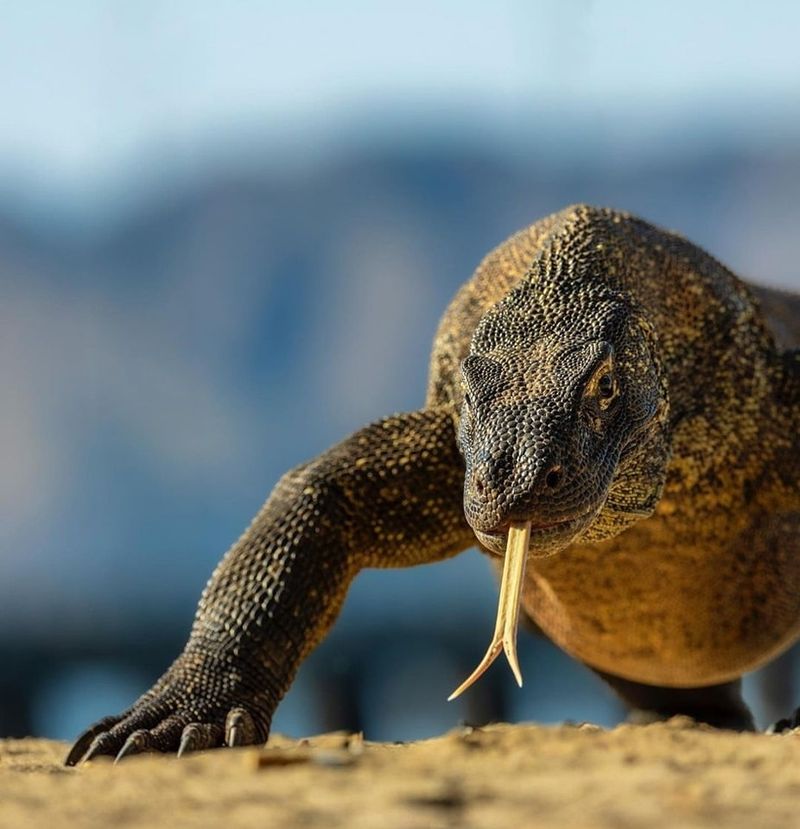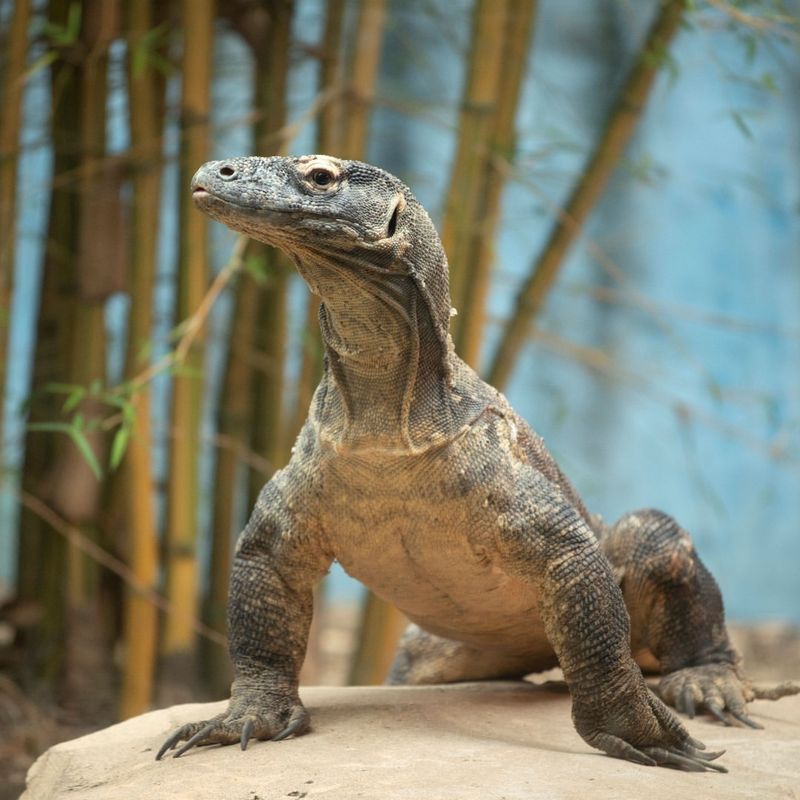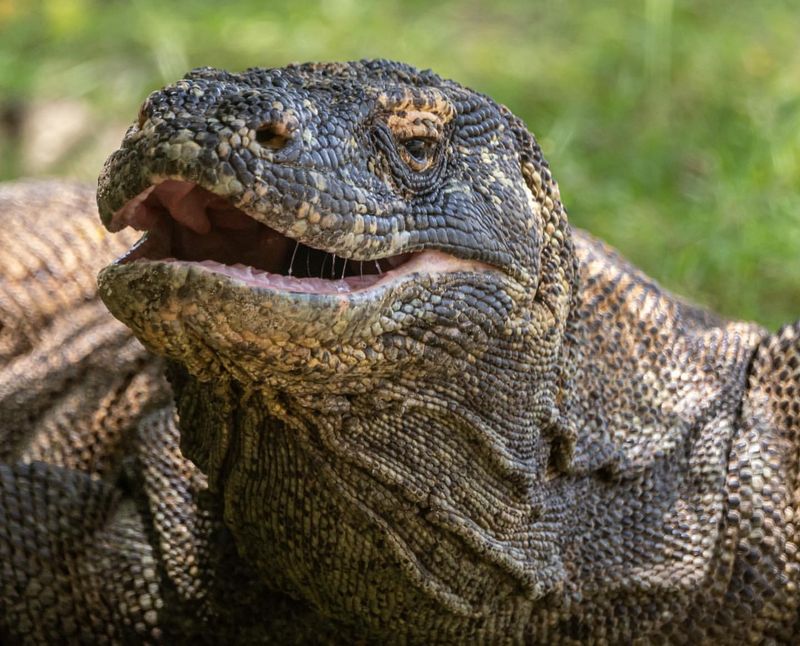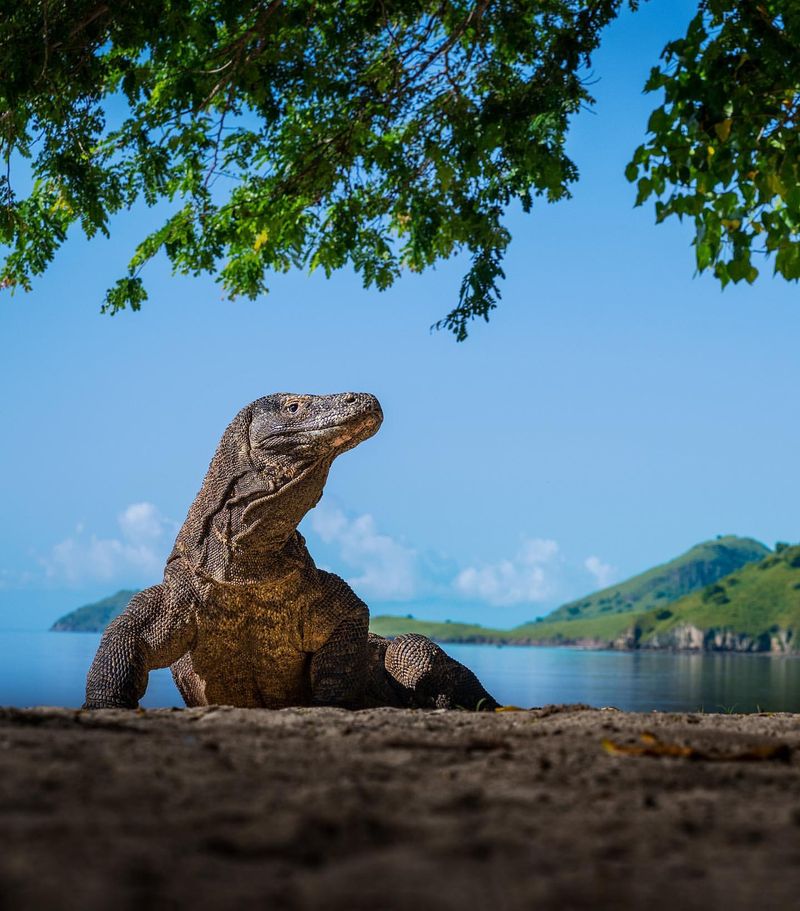📖 Table of Content:
- 1. Largest Living Lizard
- 2. Venomous Bite
- 3. Carnivorous Diet
- 4. Unique Reproduction
- 5. Limited Habitat Range
- 6. Cold-Blooded Nature
- 7. Remarkable Sense of Smell
- 8. Efficient Digestion
- 9. Social Behavior
- 10. Hunting Strategies
- 11. Threats and Conservation
- 12. Unique Locomotion
- 13. Immune System Resilience
- 14. Longevity and Survival
- 15. Role in Culture and Mythology
The Komodo dragon, a living relic from prehistoric times, has managed to survive for millions of years. These massive reptiles are known for their remarkable hunting skills and their ability to thrive in harsh environments. Their survival through the ages offers valuable insights into the power of adaptation and natural evolution.
With their keen sense of smell and powerful physiques, Komodo dragons are efficient predators. They are capable of bringing down prey much larger than themselves, making them apex predators in their native habitats. The unique characteristics that set them apart make them one of the most fascinating creatures in the animal kingdom.
From their venomous bite to their complex social behavior, Komodo dragons possess a range of traits that make them exceptional survivors. Their ability to adapt to changing conditions and evolve over millions of years speaks to their resilience. Exploring these incredible creatures sheds light on the mysteries of nature and the importance of conservation.
1. Largest Living Lizard
Holding the title of the largest living lizard on Earth, the Komodo dragon can grow up to 10 feet in length and weigh over 150 pounds. These giants are truly awe-inspiring.
They’re primarily found on the Indonesian islands of Komodo, Rinca, Flores, and Gili Motang. Despite their size, these reptiles are skilled hunters, using their strong limbs and keen senses to stalk prey.
Known for their incredible strength, they can take down animals as large as deer. Their size and power make them a dominant force in their ecosystem, comparable to apex predators like tigers and crocodiles.
2. Venomous Bite
Among their many adaptations, Komodo dragons possess a venomous bite. This venom contains anticoagulants, which prevent the blood of their prey from clotting.
Unlike snakes, their venom glands are located in their lower jaws. When a Komodo dragon bites its victim, the venom seeps into the wound, causing shock and blood loss. This deadly cocktail allows the dragon to track and eventually overpower its prey.
Though powerful, the venom is not usually dangerous to humans unless in high doses. Scientists study this venom for potential medical applications, such as new anticoagulant drugs.
3. Carnivorous Diet
Komodo dragons are carnivores, feeding primarily on large animals. Their diet includes deer, pigs, and water buffalo. They even consume carrion, showcasing their adaptability.
These predators use stealth and speed, often ambushing their prey. Once they attack, they rely on their sharp claws and powerful jaws to deliver a lethal bite. Komodo dragons can consume up to 80% of their body weight in a single meal.
After feeding, they rest to digest, a process that can take days. Their efficient digestive systems allow them to extract maximum nutrients from their food.
4. Unique Reproduction
Exhibiting unique reproductive strategies, Komodo dragons can reproduce through parthenogenesis. This allows females to produce fertile eggs without mating. It’s a fascinating survival trait in the animal kingdom.
In the wild, they typically reproduce sexually, but parthenogenesis ensures survival when males are scarce. Females lay about 20 eggs, which incubate for seven to eight months. Hatchlings are vulnerable and spend their early months in trees, avoiding predators.
As they grow, they gradually descend to the ground. This reproductive flexibility provides resilience in changing environments. Conservationists study these strategies to understand and protect this vulnerable species, ensuring its continued existence in the wild.
5. Limited Habitat Range
Native to a few Indonesian islands, including Komodo and Rinca, Komodo dragons have a limited range. This small habitat makes them especially vulnerable to environmental changes. Conservation efforts are critical to their survival.
The dragons rely on these environments for hunting and nesting. Human activities pose threats, including habitat destruction and poaching. Conservation efforts focus on preserving these unique ecosystems.
Protected areas and national parks play a crucial role in safeguarding their natural habitat. By understanding their ecological needs, conservationists aim to ensure the survival of this remarkable species for future generations.
6. Cold-Blooded Nature
As ectothermic creatures, Komodo dragons depend on external heat sources to regulate their body temperature. They bask in the sun to warm up and seek shade to cool down. This cold-blooded nature influences their hunting patterns and metabolism.
During cooler periods, their activity levels decrease, conserving energy. Conversely, they become more active in warm conditions, optimizing hunting success. Their thermoregulation techniques are finely tuned to their environment, showcasing evolutionary adaptation.
By studying these behaviors, scientists gain insights into reptilian biology. Understanding these patterns aids conservationists in managing habitats and ensuring the species’ long-term survival.
7. Remarkable Sense of Smell
With an extraordinary sense of smell, Komodo dragons can efficiently locate prey. They use their forked tongues to capture scent particles and transfer them to the Jacobson’s organ in their mouths. This keen ability enhances their hunting skills.
This remarkable sense aids in hunting and scavenging, especially when stalking elusive animals. By honing in on scents, they can find carcasses left by other predators.
This efficiency ensures a steady food source, even in challenging environments. Studying their olfactory abilities provides insights into reptilian sensory adaptations and ecological roles.
8. Efficient Digestion
Possessing highly efficient digestive systems, Komodo dragons can extract maximum nutrients from their prey. After consuming large meals, they digest bones, hooves, and even hide, leaving minimal waste. This remarkable efficiency helps them survive in harsh environments.
Their stomachs produce strong acids and enzymes, facilitating rapid breakdown of food. This efficiency supports their carnivorous diet, enabling them to go weeks without eating after a substantial feast. They can consume up to 80% of their body weight in one sitting.
This remarkable digestive prowess contributes to their survival in harsh environments. By understanding this process, scientists explore potential applications in waste reduction technology.
9. Social Behavior
Despite their solitary reputation, Komodo dragons exhibit social behaviors, particularly during feeding. They establish a hierarchy based on size and strength, with larger dragons dominating access to food. This social structure reduces conflict and promotes efficient feeding.
Communication also plays a role; they use body language and physical displays to assert dominance or submission. These interactions provide valuable insights into reptilian social systems.
Understanding their behavior aids in conservation efforts, ensuring captive environments mimic natural social interactions. By studying their social dynamics, researchers gain a deeper understanding of these complex creatures and their ecological impact.
10. Hunting Strategies
Komodo dragons use a variety of hunting strategies to catch their prey. Relying on stealth and patience, they often ambush unsuspecting animals. This method makes them highly effective predators in their environment.
Once they bite, the venom, along with their strength, incapacitates the victim. They track wounded animals for days, waiting for the venom to take effect. This strategic approach minimizes energy expenditure while maximizing hunting success.
By observing these tactics, scientists learn about predator-prey interactions and ecosystem dynamics. These insights contribute to broader ecological studies, highlighting the balance between species in the wild.
11. Threats and Conservation
Facing numerous threats such as habitat loss, natural disasters, and human interference, Komodo dragons are at risk. Conservation efforts focus on preserving their habitats and regulating tourism. These initiatives are vital to ensuring their survival in the wild.
National parks and protected reserves provide safe havens for these creatures, allowing populations to thrive. Community involvement is crucial, educating locals about the importance of protecting this species.
Conservationists also monitor genetic diversity, ensuring healthy populations. These efforts maintain ecological balance and safeguard the future of the Komodo dragon. By supporting these initiatives, we contribute to the survival of one of nature’s most iconic and ancient reptiles.
12. Unique Locomotion
Komodo dragons have a distinctive way of moving, using their strong limbs and muscular tails for balance. This locomotion allows them to navigate rugged landscapes with agility. Their gait is characterized by a side-to-side body motion, enabling them to cover large distances efficiently.
This movement style is adapted to their environment, aiding in hunting and territory exploration. By studying their locomotion, scientists explore the biomechanics of reptilian movement.
These insights have applications in robotics and prosthetics, where mimicking natural movements can lead to technological advancements. Understanding their mobility aids in conservation strategies and habitat management.
13. Immune System Resilience
With a robust immune system, Komodo dragons can recover swiftly from injuries and infections. Their resilience is partly attributed to antimicrobial peptides in their blood, which fight off bacteria and viruses. This unique defense mechanism enhances their survival in the wild.
Scientists study these peptides for potential medical applications, such as developing new antibiotics. Their immune system allows them to thrive in harsh environments where disease and injury are common. By understanding their immune responses, researchers gain insights into reptilian health and evolutionary adaptations.
This knowledge contributes to conservation efforts, ensuring healthy populations in the wild. Their resilience serves as a model for medical research and ecological studies.
14. Longevity and Survival
Komodo dragons have impressive longevity, often living beyond 30 years in the wild. Their survival is attributed to their adaptability and evolutionary traits. They have outlived many species, including dinosaurs, showcasing their resilience.
Factors contributing to their longevity include efficient metabolism, robust immune systems, and strategic reproduction. These traits enable them to withstand environmental changes and diseases. Their long lifespan allows them to contribute to their ecosystems over extended periods, impacting prey populations and vegetation.
Conservationists study their longevity to understand aging processes and ecological contributions. Protecting these ancient creatures ensures their continued impact on biodiversity.
15. Role in Culture and Mythology
In Indonesian culture and mythology, the Komodo dragon is a symbol of strength and power. Local legends often portray them as guardians or revered ancestors. Their presence is a mark of resilience, earning deep respect from the people.
This cultural importance influences conservation efforts, fostering community involvement in protecting their habitats. Art and folklore celebrate their presence, showcasing their role in the cultural identity of the region. By understanding their cultural significance, conservationists engage local communities, promoting sustainable practices.
This relationship between culture and conservation highlights the importance of preserving both natural and cultural heritage. Such efforts ensure the coexistence of humans and these majestic reptiles.
